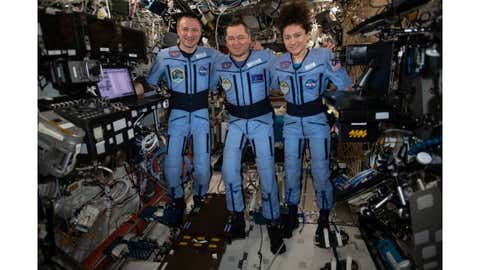
Representational picture.
(IANS)
When persons dream about travelling to Mars or living aboard the International House Station, they envision fascinating human body variations like an raise in their height or a speedy weight loss. Including to this listing, a new analyze demonstrates that an astronaut had a transform of coronary heart after shelling out a yr in space—quite virtually!
The study, done by scientists at UT Southwestern, observed that the heart of an astronaut who spent nearly a 12 months aboard the International Place Station shrank, even with normal training. But don’t drop coronary heart the blood-pumping organ continued to perform very well even with the shrinkage.
This final result was based mostly on the evaluation of retired astronaut Scott Kelly, who missing an normal of .74 grams per week in the mass of his heart’s still left ventricle throughout the 340 times he spent in place, from March 27, 2015 to March 1, 2016. This reduction transpired even with a weekly workout regimen consisting of biking, treadmill, and resistance training.
These conclusions are equivalent to the reviews of a lengthy-distance swimmer who invested just about fifty percent a calendar year attempting to cross the Pacific Ocean.
In lieu of NASA preparing to deliver human beings to Mars in the 2030s, researching the physical effect of spending extensive periods in area has grow to be essential in get to decipher the extent of the human’s physique ability to adapt.
In this situation, researchers observed positive evidence as the astronaut’s coronary heart adapted comparatively nicely even right after shrinking, in accordance to senior creator Benjamin Levine, M.D., professor of inner medicine at UT Southwestern.
“It did shrink a little bit. It did atrophy and it did get a very little lesser, but the functionality remained excellent,” Levine claimed. “I consider this is encouraging for extended-period area flight. It displays that even immediately after a 12 months in room, the coronary heart adapts reasonably properly.”
Together with this research, Levine recently accomplished a distinctive task that examined coronary heart composition and purpose in 13 astronauts who expended 6 months on the place station. The principal discovering of this study was the identification of the variations in cardiac adaptation to space from just one astronaut to another. Even though the fittest astronauts misplaced coronary heart muscle mass mass for the duration of their time in area, some of the least fit obtained muscle mass mass.
“It all depended on how significantly get the job done the astronaut’s coronary heart did in house relative to how much it consistently did on the floor,” Levine described.
In recognition of all his operate, NASA not too long ago awarded Levine $3.8 million in immediate and oblique funding for the subsequent 13 several years to analyze the effects of area vacation on the human heart. This will permit him to continue on his investigate as more extended-length space flights are performed.
The findings of this analysis had been released on March 29 in the journal Circulation, and can be accessed here.
**
For weather, air air pollution, science, and COVID-19 updates on the go, download The Temperature Channel App (on Android and iOS store). It is free of charge!

